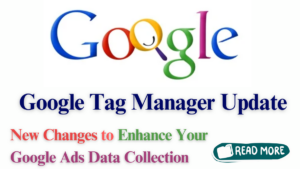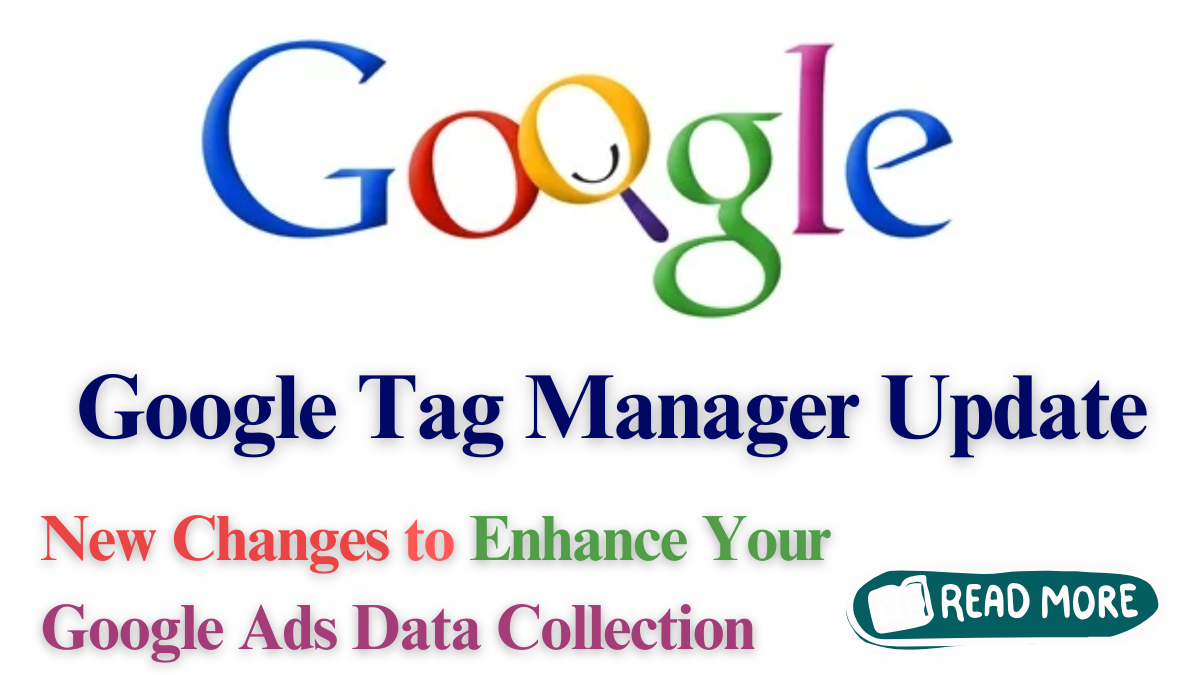Google is making a big change to how its Google Tag Manager (GTM) works with Google Ads, and this update will go live in April 2025. If you use GTM to track your website’s activity or manage ads, this change will be important for you. The update will make sure that the Google tag (a piece of code used for tracking) loads and runs before any events are sent out. This small change will help track user actions more accurately and improve how ads perform, which is great news for advertisers. Even though it might seem like a small tweak, it can make a big difference in how well your campaigns run by ensuring that your data is more reliable.
Let’s break down what exactly is happening, why it matters, and how it will affect you.

What’s Changing with Google Tag Manager?
Google Tag Manager (GTM) is a tool that allows advertisers to manage and deploy marketing tags (snippets of code that collect data) on their websites without needing to modify the website’s code directly. GTM has been an essential tool for tracking user behavior on websites, particularly for event tracking, such as purchases, form submissions, or other user interactions.
The key change that Google is making is in the order of operations when loading tags and sending events. Previously, there were instances where tags and events didn’t fire in the ideal order, leading to issues with data accuracy. For example, an event could be sent before the Google tag had fully loaded, resulting in incomplete or incorrect data being collected.
Now, with the new update, Google Tag will fire before any events are triggered. This change is designed to fix the timing issue and ensure that every event is properly tracked, so advertisers can get accurate data about their campaigns.
Why is This Update Important?
The importance of this update lies in its potential to drastically improve the accuracy of event tracking on websites and apps. Event tracking is critical for measuring the success of Google Ads campaigns. Without accurate data, it can be nearly impossible to optimize campaigns or make informed decisions.
By ensuring that the Google tag loads before events are sent, advertisers will experience several benefits:
- More accurate event tracking: When the Google tag loads first, the events fired afterward are more likely to be captured correctly.
- Improved measurement of user interactions: The new order of operations will lead to a better understanding of user behaviors, such as how they interact with ads, what actions they take on a website, and how often they convert.
- Better attribution: The update will allow advertisers to track users from the moment they interact with the ad to their eventual conversion, improving ad targeting and budget allocation.
This update is crucial because even small inaccuracies in tracking can lead to wasted ad spend, poor ad targeting, and ineffective campaigns. By addressing the issue of event firing order, Google aims to make sure that advertisers can rely on more accurate, comprehensive data to guide their decisions.
How Will This Impact Advertisers?
The upcoming changes to GTM will bring several benefits to advertisers, including the following:
1. Enhanced Tracking Accuracy
Accurate tracking is the foundation of successful Google Ads campaigns. When events are triggered in the wrong order, data gaps can occur, which can make it difficult to understand how users are interacting with your site or app. The new approach of ensuring that the Google tag fires first will minimize these gaps, helping you track more user interactions accurately. This, in turn, will lead to a clearer picture of your audience’s behavior, allowing for better campaign optimization.
2. Streamlined Data Collection
With more accurate tracking comes more reliable data collection. The update will improve the event tracking process, ensuring that all data collected is timely and valid. As a result, advertisers will be able to use this data to analyze the effectiveness of different ad campaigns, channels, and target audiences. This, in turn, will help marketers focus their efforts on strategies that work, improving ROI.
3. Improved Conversion Tracking
One of the main reasons for using Google Ads is to drive conversions, whether that be purchases, form submissions, or other valuable user actions. With more reliable tracking, advertisers will be able to attribute conversions more accurately to their campaigns. This means that you’ll have a better understanding of which ads or keywords are driving the most valuable actions on your website or app.
4. Easier Optimization of Campaigns
With accurate data flowing through your Google Ads account, optimization becomes easier. You can better identify which ad creatives, keywords, or bidding strategies are performing well. You’ll also have the ability to adjust campaigns based on real-time data, helping you get the best results from your ad spend.
5. Reduction in Tracking Errors
Google’s new approach will help reduce common issues such as tracking errors, missed conversions, or events not being recorded properly. The change is designed to create a more reliable and error-free environment, making it easier for advertisers to trust the data they’re working with.
How to Prepare for the Update?
While the update won’t require any immediate changes from most advertisers, it’s always a good idea to prepare for new features or adjustments. Here are a few steps you can take to ensure a smooth transition:
1. Test Your Event Tracking
Before the update goes live, take the time to test your current event tracking setup to ensure it’s firing as expected. You can use Google’s Tag Assistant tool to monitor the firing of your tags. Check that the Google tag is firing before any events are triggered, and confirm that all events are being recorded accurately.
2. Review Your GTM Setup
Since this update changes how events are triggered, it’s a good time to revisit your Google Tag Manager setup. Review all your tags, triggers, and variables to ensure that everything is configured correctly. You may need to adjust your tags to take full advantage of the updated firing order once the change goes into effect.
3. Stay Updated on Google’s Official Guidelines
Google may release additional documentation or best practices for managing tags and events after the update goes live. Stay informed about any official guidelines to ensure your setup is aligned with the new system.
4. Monitor Performance Post-Update
Once the update is live, keep an eye on your campaign performance to see if there are any noticeable changes. Look for improvements in tracking accuracy, conversions, and overall ad performance. If you encounter any issues, consider reaching out to Google support for assistance.
Conclusion
The upcoming changes to Google Tag Manager in April 2025 represent a significant step toward improving event tracking accuracy and data collection for Google Ads advertisers. By ensuring that the Google tag loads before any events are triggered, Google aims to help advertisers gather more reliable data, which is essential for campaign optimization, better targeting, and improving overall ad performance. Advertisers can prepare for the update by testing their current tracking setups, reviewing GTM configurations, and staying up-to-date with Google’s guidance.
The update is expected to streamline event tracking, reduce errors, and provide a more accurate and efficient way to measure the effectiveness of Google Ads campaigns. With more reliable data, advertisers can make better decisions and maximize their return on investment.
FAQ
What is the Google Tag Manager update about?
Google is ensuring that the Google tag fires before sending events to improve event tracking accuracy and data collection for Google Ads.
How will this update benefit advertisers?
Advertisers will benefit from more reliable event tracking, fewer errors, and better insights into campaign performance, allowing for more accurate data-driven decisions.
Do I need to change my Google Tag Manager setup?
No immediate changes are required, but it’s a good idea to review and test your GTM setup to ensure it’s working as expected.
When will the Google Tag Manager update go live?
The update will take effect in April 2025.
Why is it important that the Google tag fires first?
By firing the Google tag before events, advertisers will have more reliable and accurate data to track user interactions and conversions, which is essential for optimizing ad campaigns.
Pari is a passionate writer known for captivating stories that blend imagination and reality. Inspired by travel, history, and everyday moments, Pari crafts narratives that resonate deeply with readers.
